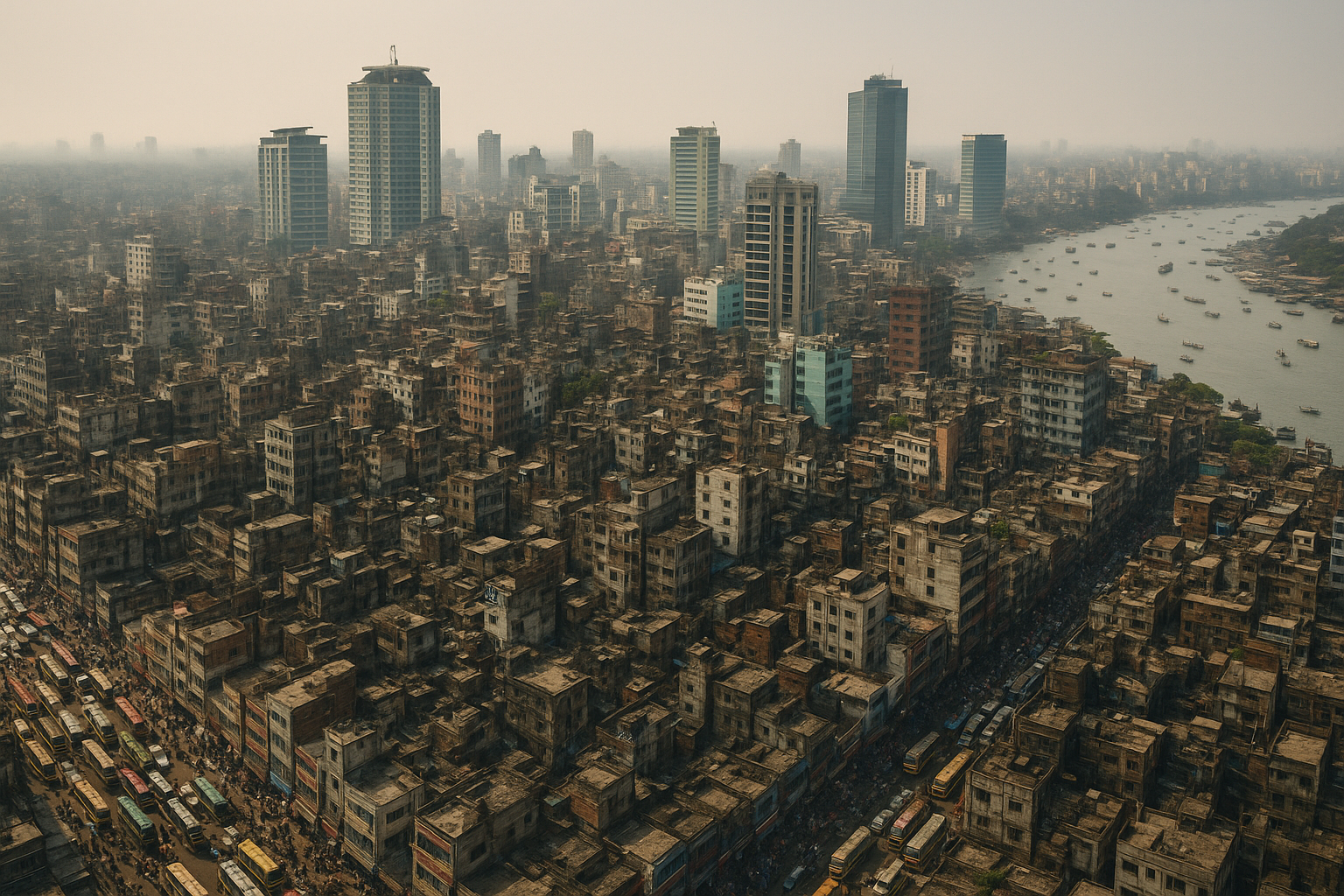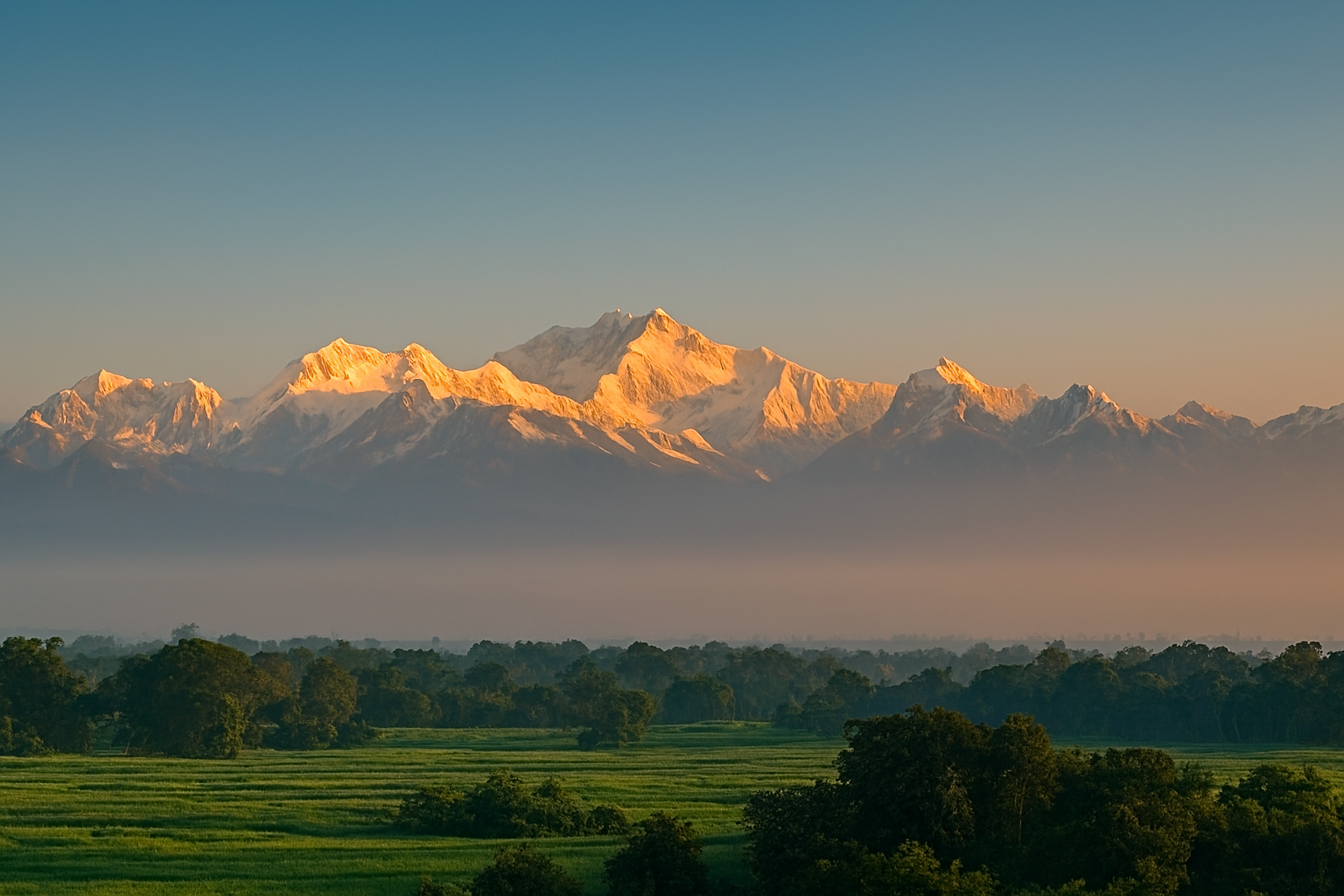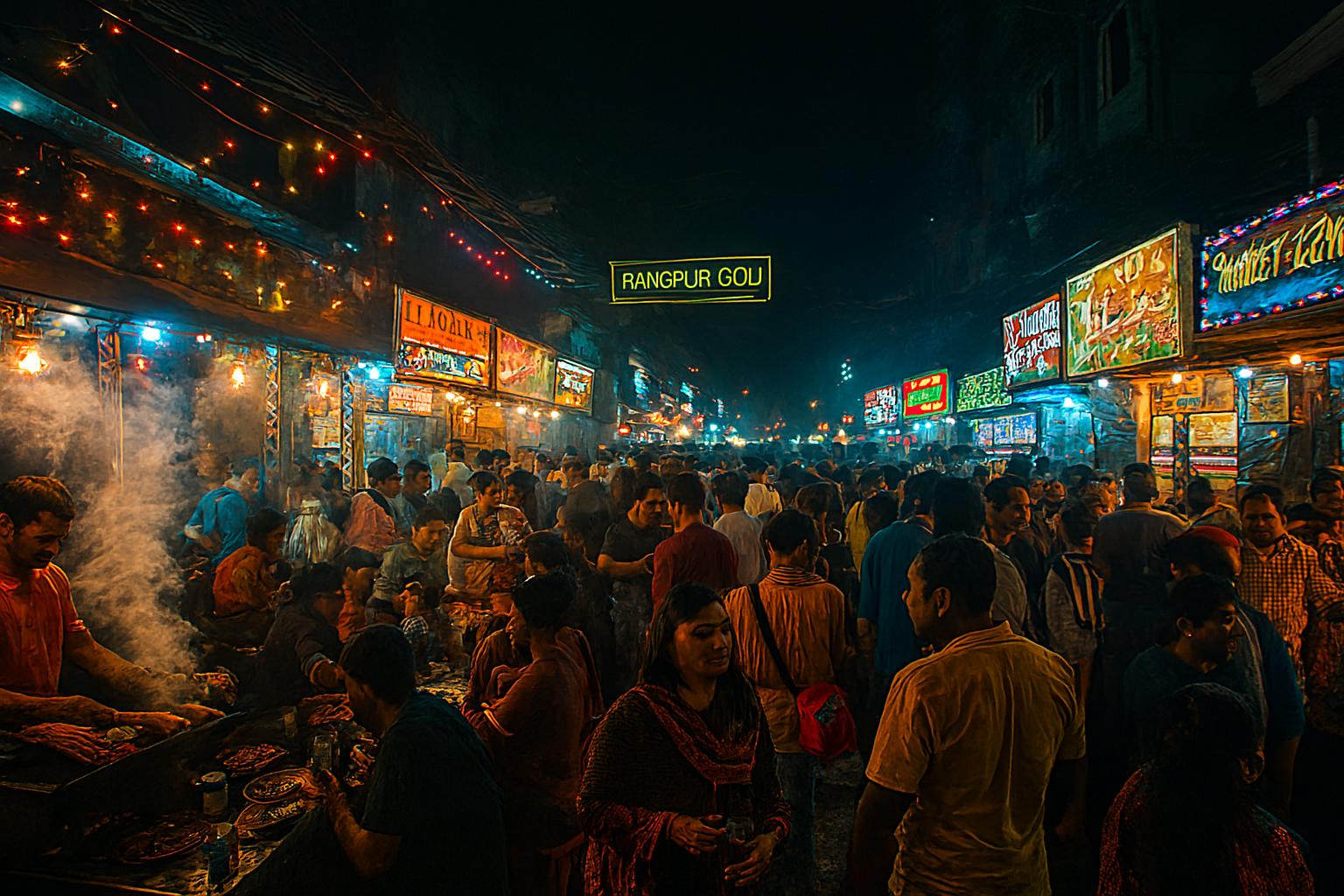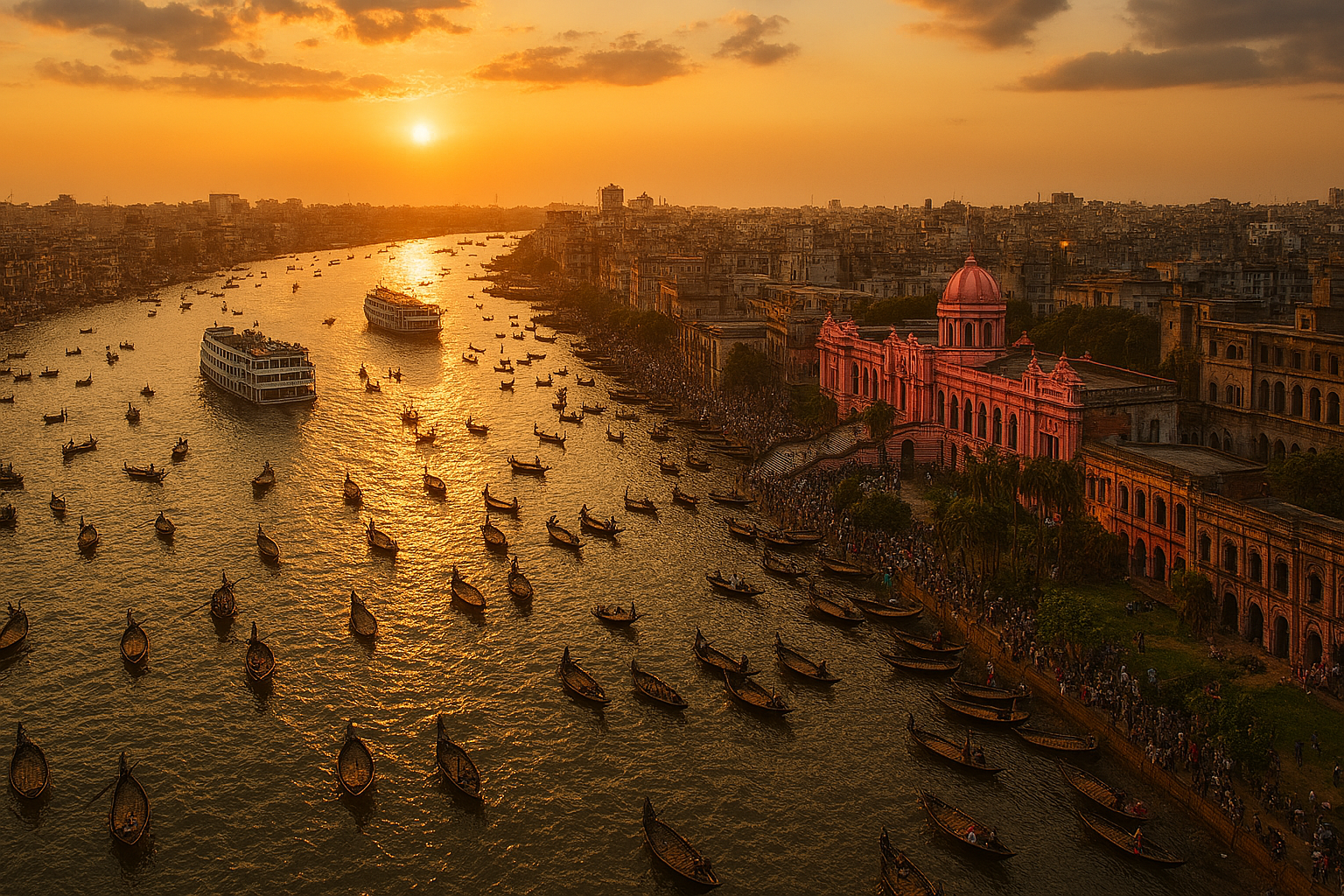Bangladesh Facts: A Complete Guide to Its People and Economy
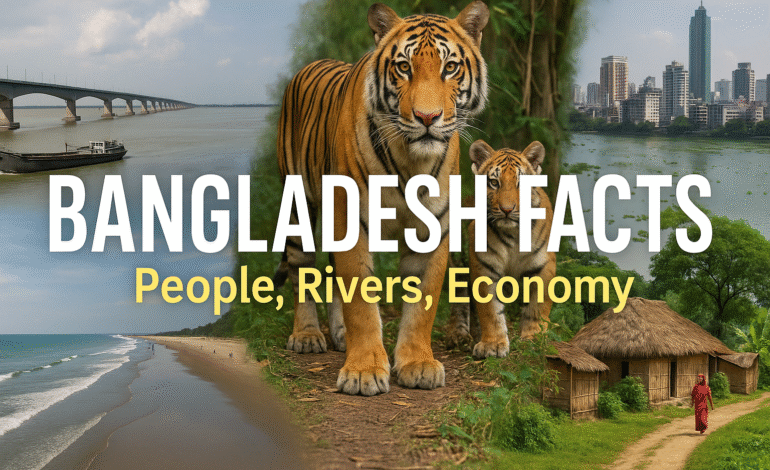
Bangladesh Facts That Everyone Should Know
Bangladesh facts are often misunderstood outside South Asia. Many people only see Bangladesh as a land of poverty, natural disasters, or cheap labor. But in reality, the country is far more complex and inspiring. With a population of over 170 million, Bangladesh has emerged as one of the fastest-growing economies in Asia while protecting a rich culture, vibrant history, and deep human resilience.
Anyone who wants to understand Bangladesh must know its geography, history, people, economy, challenges, and opportunities. According to World Bank data, Bangladesh has transformed from one of the poorest nations in 1971 to a middle-income aspirant today. At the same time, its rivers, forests, and cultural traditions remain central to its identity.
Geography of Bangladesh: Land of Rivers and Deltas
One of the most important Bangladesh facts is its geography. The country is located in South Asia, bordered by India, Myanmar, and the Bay of Bengal. It spans around 148,460 square kilometers, making it smaller than many countries but incredibly dense with people.
Bangladesh is home to more than 700 rivers, including the Ganges, Brahmaputra, and Meghna. These rivers form the largest delta in the world, known as the Ganges Delta. While this geography makes the land fertile and ideal for farming, it also makes the country vulnerable to flooding, cyclones, and rising sea levels. The United Nations ranks Bangladesh among the most climate-vulnerable countries in the world.
History and Struggle for Independence
Bangladesh facts cannot be told without its dramatic history. The area was once part of Bengal, a region with rich traditions of literature and trade. After 1947, Bangladesh became East Pakistan during the partition of British India.
Language became a core issue of identity. The Language Movement of 1952, where students protested for the recognition of Bangla, shaped national pride. In 1971, after a nine-month Liberation War, Bangladesh gained independence. The war left around three million dead and millions displaced. The struggle cemented a collective spirit that continues to define Bangladesh today.
People and Demographics of Bangladesh
Bangladesh facts about people show a very young and dynamic nation. The population is over 170 million, making it the eighth most populous country in the world. The majority are Bengali Muslims, about 90 percent, while Hindus make up around 8 percent. Other groups include Buddhists, Christians, and indigenous communities in the Chittagong Hill Tracts.
Bangla is the official language, spoken almost universally. The Language Movement led to UNESCO recognizing February 21 as International Mother Language Day. Life expectancy has risen to about 73 years, a significant increase from the 1970s.
Politics and Governance in Bangladesh
Bangladesh facts about politics are often marked by rivalry and instability. The country is a parliamentary democracy, but politics has long been dominated by two parties: the Awami League (AL) and the Bangladesh Nationalist Party (BNP). Their rivalry has often led to strikes, protests, and sometimes violence.
Despite these challenges, Bangladesh has managed to maintain steady governance and continue economic growth. Corruption, weak institutions, and limited accountability remain obstacles, but civil society and media often push for reforms.
Economy: Growth and Transformation
Bangladesh facts about the economy reveal a remarkable story. Once described as a “basket case” after independence, Bangladesh has become a fast-growing economy. The GDP is about $460 billion in 2025, with steady growth rates averaging 6–7 percent.
The ready-made garment industry is the backbone of the economy, making up over 80 percent of exports. According to BGMEA, Bangladesh is the second-largest garment exporter in the world after China. Millions of workers, mostly women, power this industry.
Remittances are another key factor. Migrant workers send home more than $20 billion annually, providing crucial support for families and the national economy. Agriculture still employs about 40 percent of the workforce, though its contribution to GDP has declined as industry and services grow.
Rivers and the Lifeline of Bangladesh
Among Bangladesh facts, rivers are central. Nearly every aspect of life connects to water. Rivers provide food, irrigation, transport, and even culture. Millions of people depend on fisheries, while boat races and songs celebrate river life.
Yet, the rivers also pose risks. Floods, erosion, and rising salinity due to climate change threaten livelihoods. The government and NGOs are working on river management, but challenges remain urgent.
Climate Change and Environmental Challenges
Bangladesh facts about the environment show both strength and vulnerability. The country is often called ground zero for climate change. Rising sea levels threaten to submerge parts of the southern coast, possibly displacing 20 million people by 2050, according to the UNDP.
The Sundarbans mangrove forest plays a critical role in protecting the coast from cyclones while hosting the Royal Bengal Tiger. Deforestation, industrial pollution, and poor waste management, however, remain serious challenges. Bangladesh has invested in renewable energy and disaster preparedness, setting an example for climate resilience.
Culture and Identity of Bangladesh
Bangladesh facts about culture show a land of poetry, music, and traditions. Rabindranath Tagore, the Nobel Laureate poet, and Kazi Nazrul Islam, the national poet, shaped Bengali literature. Folk traditions like Baul songs, jatras (folk theatre), and puthis (oral tales) are still alive.
Food is another cultural highlight. Rice and fish are staples, and hilsa is the national fish. Sweet dishes like roshogolla and mishti doi are famous across South Asia. Festivals such as Pahela Baishakh, Eid, and Durga Puja bring people together regardless of religion.
Tourism in Bangladesh
Bangladesh facts about tourism highlight unexplored beauty. Cox’s Bazar has the world’s longest sandy beach, stretching 120 kilometers. Saint Martin’s Island, a coral island, attracts nature lovers. The Sundarbans is a UNESCO World Heritage Site, known for mangroves and wildlife.
Srimangal is called the tea capital, while Paharpur hosts an ancient Buddhist monastery listed by UNESCO. Tourism is growing, but infrastructure, promotion, and safety need improvement to make Bangladesh a global tourist hotspot.
Education and Human Development
Bangladesh facts about education show both progress and gaps. The literacy rate has improved to about 75 percent. Primary school enrollment is nearly universal, and gender parity has been achieved in many areas.
However, universities rank low globally, and research capacity is limited. Many students seek higher education abroad. Strengthening the education system is essential for building a skilled workforce.
Healthcare has improved. Infant mortality has fallen, and maternal health programs have saved countless lives. Still, rural areas face shortages of doctors and modern facilities.
Challenges Facing Bangladesh
Bangladesh facts would not be complete without its challenges. Overpopulation, traffic congestion, corruption, and unemployment remain pressing issues. Rapid urbanization is straining infrastructure, especially in Dhaka, one of the world’s most crowded cities.
Political instability sometimes slows progress. Climate change adds another layer of urgency. Yet, Bangladesh has shown remarkable resilience in overcoming adversity.
Opportunities for the Future
Despite challenges, Bangladesh’s future looks promising. A young population means a demographic dividend if properly trained. The digital economy is expanding, with startups and IT outsourcing growing fast. Renewable energy, blue economy opportunities in the Bay of Bengal, and regional trade could further boost growth.
If governance and infrastructure improve, Bangladesh could become one of the Asian Tigers of the 21st century.
Why Knowing Bangladesh Facts Matters
Bangladesh facts show a country of contradictions and possibilities. It is vulnerable to climate change yet resilient in recovery. It is poor in resources yet rich in human spirit. It struggles with governance but excels in growth.
For anyone seeking to understand Bangladesh, it is essential to look beyond stereotypes. Bangladesh is not just a country of disasters but also of poets, rivers, entrepreneurs, and dreamers. Its people have shown that with determination, even the most difficult challenges can be turned into opportunities.
